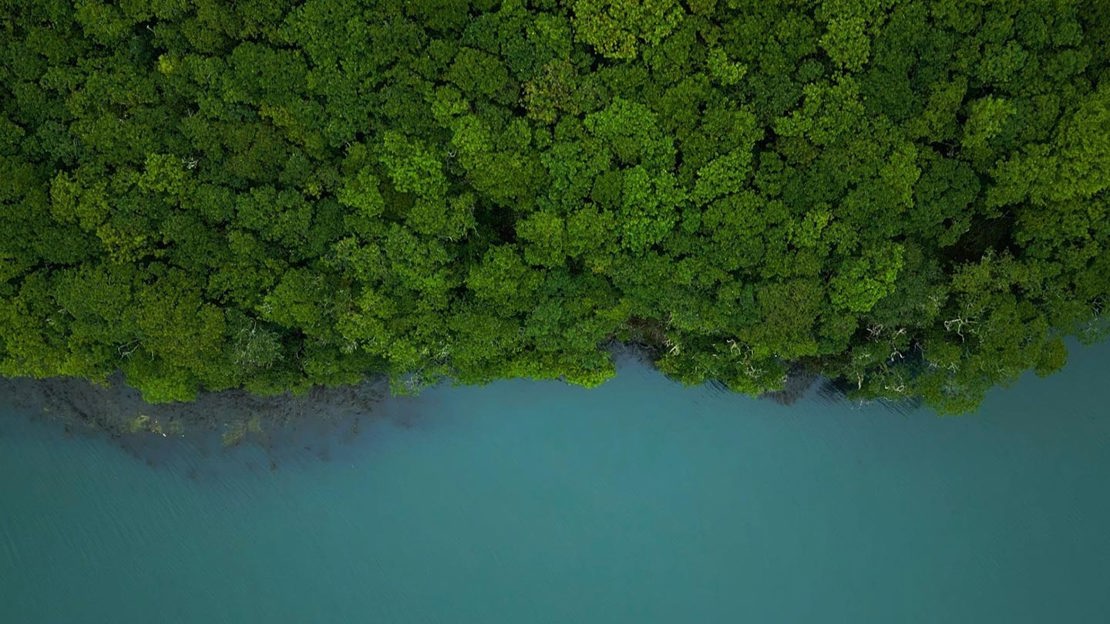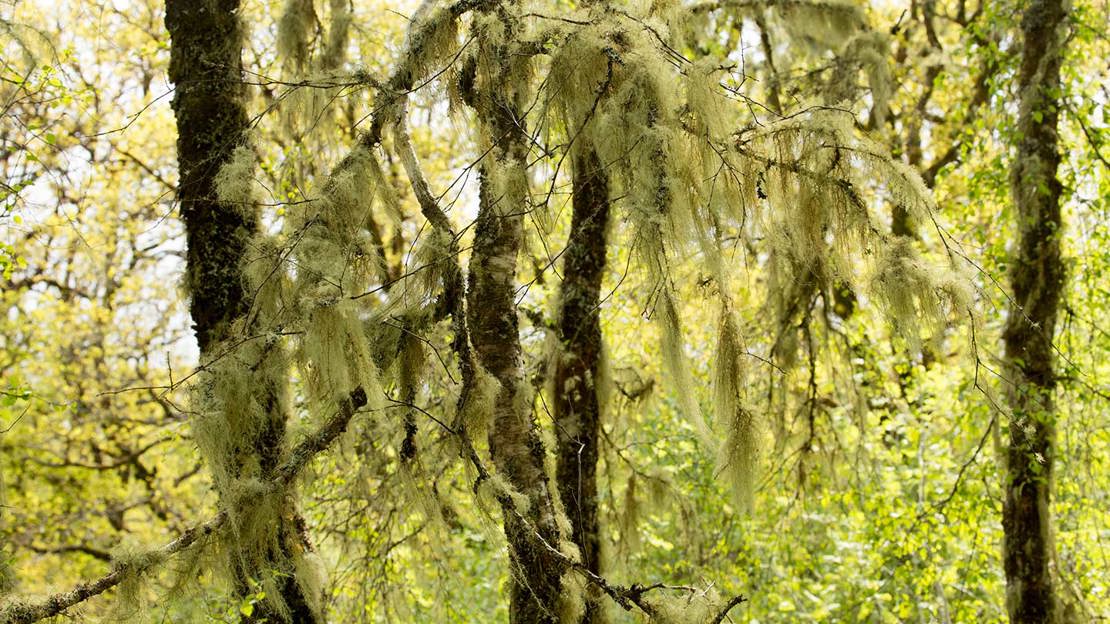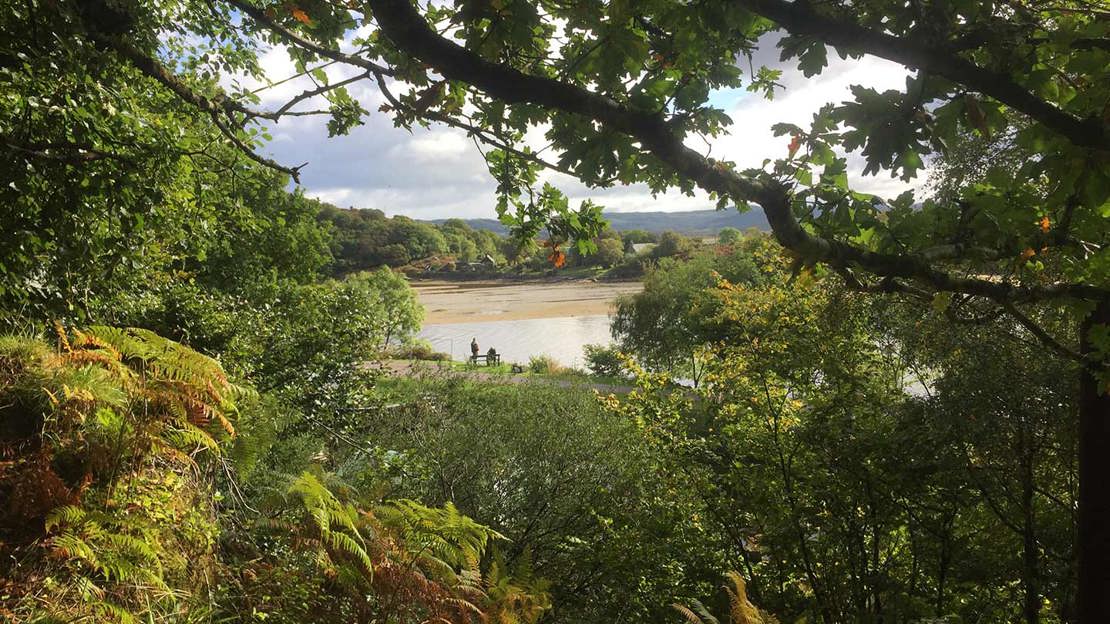Five reasons to celebrate World Rainforest Day

Senior PR officer
British rainforest – sometimes called temperate or Celtic rainforest – stretches along the west coast of Britain, from Scotland to Cornwall.
These rich and fascinating habitats once covered around 20% of the UK but this has dwindled to just 2%. As well as being home to various weird and wonderful wildlife, rainforests could play a key role in our resilience to climate change.
The Woodland Trust cares for rainforest sites across the UK and is part of the Alliance for Scotland’s Rainforests, the Alliance for Wales' Rainforests and the South West Rainforest Alliance, as well as leading Rainforest Recovery – the southwest strand of the Rainforest Restoration Project – in partnership with Plantlife.

World Rainforest Day is celebrated on 22 June with good reason. Here are five ways rainforests help us.
Rainforests hold water
By soaking up rain like a sponge and releasing it gradually, rainforests help reduce flooding in the wet season and store water during drought. They also reduce pressure on drainage and sewage systems by slowing the flow of rainwater, which trickles down ‘vertical rivers’ into the soil.
This is more important than ever, as according to the Met Office the number of intense rainfall events could increase by up to 50% by 2070 due to climate change, putting even more pressure on our water systems.
Rainforests bring balance to our climate
The west coast of Britain is known for its rainfall, but new research suggests that having more temperate rainforest in the west may help reduce drought risk in the east. It’s a theory called the rain shadow effect, where rainforests create evaporated moisture that can be carried by prevailing southwesterly winds, which typically move clouds from the west of the UK to the east, where it may fall as rain.
Rainforests also store carbon and cool local air, helping regulate temperature and protecting landscapes against the shock of sudden weather events.

Rainforests are home to rare and wonderful life
In the UK we are a stronghold for plants like lichens, mosses and liverworts. We have over 1,000 species of bryophytes and 2,000 species of lichen, making us the most biodiverse place on earth for lichens. These tiny plants help clean the air, shelter insects and signal forest health.
Rainforests are also rich in wildlife – from dormice nesting in thickets to the blue ground beetle glinting under logs, the rubbery hazel glove fungus and the pied flycatcher. Many of these species depend on the unique conditions found in temperate rainforests and now survive in the last remaining fragments.
Rainforests connect land to sea
Temperate rainforests grow where sea breezes bring steady rains. They are shaped by the sea and are increasingly becoming known as ocean forests.
Some of the most powerful rainforest restorers are animals that move between ocean and land. Atlantic salmon carry nutrients from the sea upstream, while sea eagles nest in the forest canopy and feed from coastal waters.
These coastal forests contribute to healthier fish populations and more resilient marine ecosystems. By restoring temperate rainforest, we rebuild and strengthen these ‘trees-to-seas’ connections.

Rainforests remind us of what’s possible
We’ve lost 90% of temperate rainforest habitat, but that means we know what needs to be done. We can restore and reconnect the remaining fragments and even create new rainforest.
Rainforests also restore us. Time spent in woodland can improve mental and physical wellbeing. Studies show that spending time in forests can lower cortisol levels, the hormone associated with stress. These landscapes offer moments of calm and the hope of recovery.
Ways we can all help Britain's rainforests include:
- planting native trees or supporting tree planting near rainforest fragments
- volunteering with the Woodland Trust or other conservation charities
- learning and sharing stories of your local rainforest
- campaigning for better protection of ancient woodland and clean air
- support restoration through donations and advocacy.
Notes to editors
This press release was written by Rosa Johnston-Flint (Woodland Trust senior PR officer) with content credit to Alejandra Hart (Woodland Trust temperate rainforest communications officer).
Rainforest Recovery is the South West strand of the Rainforest Restoration Project. It is being led by the Woodland Trust in partnership with Plantlife. This project is funded as part of the government's Species Survival Fund. The fund was developed by Defra and its Arm's-Length Bodies. It is being delivered on behalf of Defra by The National Lottery Heritage Fund.
The State of the South West Rainforest report 2025 is due for release later this year.
There are sections about rainforests in the Woodland Trust’s new State of the UK’s Woods and Trees 2025 report.
Find out more information about our work on rainforests in Scotland.
Find out more information about our work on rainforests in Wales.
About the Woodland Trust
The Woodland Trust is the largest woodland conservation charity in the UK with more than 500,000 supporters.
With a vision of a world where woods and trees thrive for people and nature, today the Trust owns and cares for more than 1,000 woodland sites, covering around 33,000 hectares.
The Woodland Trust has three key aims:
- protecting the UK's rare, unique and irreplaceable ancient woodland
- restoring damaged ancient woodland, nurturing precious pieces of our natural heritage back to life
- establishing new native trees and woods to create healthy, resilient landscapes for people and wildlife.
Access to all Woodland Trust woods is free so everyone can experience the physical and mental benefits of trees.
GDPR
The Woodland Trust uses Cision to obtain work contact details for journalists and editors that we feel may be interested in a particular press release or story. If you do not wish to be contacted in the future by the Woodland Trust, please email media@woodlandtrust.org.uk and let us know you wish to be taken off any or all lists.

